Home Tags Posts tagged with "pinger"
pinger
According to the Australian officials, the area where acoustic signals thought linked to the missing Malaysian plane were detected can now be ruled out as the final resting place of flight MH370.
The Bluefin-21 submersible robot had finished its search of the area and found nothing, they said.
Efforts would now focus on reviewing search data, surveying the sea floor and bringing in specialist equipment.
Flight MH370 went missing on March 8 as it flew from Kuala Lumpur to Beijing.
Using satellite data, officials have concluded that the airliner, which had 239 people on board, ended its journey in the Indian Ocean, north-west of the Australian city of Perth.
No trace of the plane has been found and there is no explanation for its disappearance.
Four pings that officials believed could be from the missing plane’s “black box” flight recorders were heard by search teams using a towed pinger locator device.
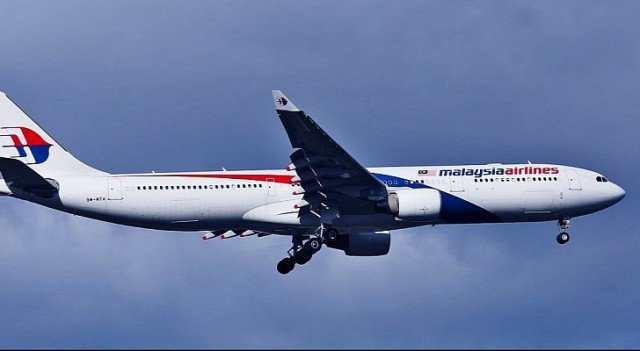
The area where acoustic signals thought linked to the missing Malaysian plane were detected can now be ruled out as the final resting place of flight MH37
These pings were used to define the area for the sea-floor search, conducted by the Bluefin-21. It had scoured over 850 sq km of the ocean floor, JACC said.
“Yesterday afternoon, Bluefin-21 completed its last mission searching the remaining areas in the vicinity of the acoustic signals detected in early April by the towed pinger locator,” a statement from the Joint Agency Co-ordination Centre (JACC) said.
“The data collected on yesterday’s mission has been analyzed. As a result, the JACC can advise that no signs of aircraft debris have been found by the autonomous underwater vehicle since it joined the search effort.
“The Australian Transport Safety Bureau [ATSB] has advised that the search in the vicinity of the acoustic detections can now be considered complete and in its professional judgement, the area can now be discounted as the final resting place of MH370.”
The statement came hours after a US Navy official told CNN that the acoustic signals probably came from some other man-made source.
“Our best theory at this point is that [the pings were] likely some sound produced by the ship… or within the electronics of the towed pinger locator,” Michael Dean, the US Navy’s deputy director of ocean engineering, told CNN.
“Always your fear any time you put electronic equipment in the water is that if any water gets in and grounds or shorts something out, that you could start producing sound,” Michael Dean said.
A US Navy spokesmen subsequently described his comments as “speculative and premature”.
In its statement, JACC said an expert working group would continue to review and refine existing data to better define a search area for the missing plane.
A Chinese ship had already begun mapping an area of ocean floor in a survey process that was expected to take three months.
Meanwhile, the ATSB would soon seek bids from commercial contractors for the specialist equipment needed for the underwater search – a process expected to begin in August, JACC said.
[youtube af43Gwg7peE 650]
Australia’s PM Tony Abbott said signals in remote seas thought to be from the missing Malaysia Airlines flight MH370 are “rapidly fading” and finding the jet will be a “massive, massive task”.
Tony Abbott said he was confident “pings” detected by search teams were from the aircraft’s black boxes.
But no new signals have been confirmed in the search area since Tuesday.
“No one should underestimate the difficulties of the task still ahead of us,” Tony Abbott warned.
Correspondents say Tony Abbott appeared to be couching his comments from Friday, in which he said he was “very confident” that signals heard by an Australian search ship were from the missing Boeing 777.
Speaking during a visit to China, Tony Abbott said teams were hoping to track further signals in a section of the southern Indian Ocean before shifting the search operation to the seabed.

Australian PM Tony Abbott said he was confident pings detected by search teams were from the missing Malaysia Airlines plane’s black boxes
“Trying to locate anything 4,500 metres [15,000 feet] beneath the surface of the ocean, about a 1,000km [620 miles] from land is a massive, massive task,” Tony Abbott said.
“Given that the signal from the black box is rapidly fading, what we are now doing is trying to get as many detections as we can so that we can narrow the search area down to as small an area as possible.”
Tony Abbott said a submersible drone would be sent to conduct a sonar search of the seabed once search teams were confident with the area identified – but he refused to say when that might be.
After analyzing satellite data, officials believe Malaysia Airlines plane with 239 people aboard flew off course for an unknown reason and went down in the southern Indian Ocean off the west coast of Australia.
Those leading the search fear that time is running out because the batteries that power the pings from the black box only last about a month, and that window has already passed.
Two sounds heard a week ago by the Australian ship Ocean Shield, towing the ping locator, were determined to be consistent with the signals emitted from the black boxes. Two more pings were detected in the same general area on Tuesday.
On Thursday, an Australian aircraft picked up an audio signal in the same area as the four previous detections but officials now believe it is unlikely to be related to the black boxes
The underwater search zone is currently a 500 miles patch of the seabed, about the size of Los Angeles.
The submersible drone, Bluefin 21, takes six times longer to cover the same area as the ping locator and it would take about six weeks to two months for it to search the current zone.
Complicating matters is the depth of the seabed in that area. The signals are emanating from 15,000 ft below the surface, which is the deepest the Bluefin can dive. The search coordination centre said it was considering options in case a deeper-diving sub was needed.
[youtube uqLs-RDS7xo 650]
An Australian P-3 Orion aircraft searching for missing Malaysia Airlines flight MH370 has detected a possible new signal in the southern Indian Ocean, Australian officials say.
The plane picked up the signal in the same area where an Australian vessel detected audio pings earlier this week, officials said.
The signal would require further analysis, but could have been from a “man-made source”, officials said.
Flight MH370 vanished on March 8, with 239 people on board.
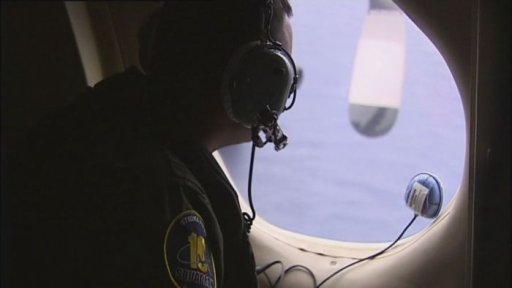
The Australian plane picked up the signal in the same area where a vessel detected audio pings earlier this week
The search zone was tightened on Thursday after a US navy “towed pinger locator” picked up audio signals in the area, sparking hopes that the plane’s black box was in the area.
Australian vessel Ocean Shield picked up four acoustic signals in the area, twice over the weekend and twice on Tuesday.
Speaking after the latest possible signal was detected, retired Air Chief Marshal Angus Houston, who is leading search efforts, said: “The acoustic data will require further analysis overnight but shows potential of being from a man-made source.”
Up to 14 planes and 13 ships are involved in Thursday’s search, scouring an area of 22 300 sq miles, around 1,400 miles north-west of Perth. It is the smallest designated area in the hunt to date.
Planes have dropped buoys equipped with hydrophone listening devices into the water to help pick up signals.
The batteries on the black box only last about a month, so teams need to work quickly to track the audio signals before they stop broadcasting.
Malaysia has come under criticism for its handling of the search, with families of the passengers on the plane accusing the authorities of a lack of transparency.
The investigation came under further scrutiny after it emerged that the final words from the plane were “good night Malaysian three seven zero”, and not “all right, good night”, as previously reported by the government.
Australian vessel Ocean Shield searching for the missing Malaysia Airlines plane has reacquired signals that could be consistent with “black box” flight recorders.
The Ocean Shield heard the signals again on Tuesday afternoon and evening, the search chief said.
Signals heard earlier had also been further analyzed by experts who concluded they were from “specific electronic equipment”, Angus Houston said.
Flight MH370 disappeared on March 8, carrying 239 people.
It was travelling from Kuala Lumpur to Beijing when it lost contact with air traffic controllers.
Malaysian officials say that based on satellite data, they believe it ended its flight in the southern Indian Ocean, thousands of miles from its intended flight path.
“I believe we are searching in the right area,” said Air Chief Marshal Angus Houston, who heads the joint agency co-ordinating the search.
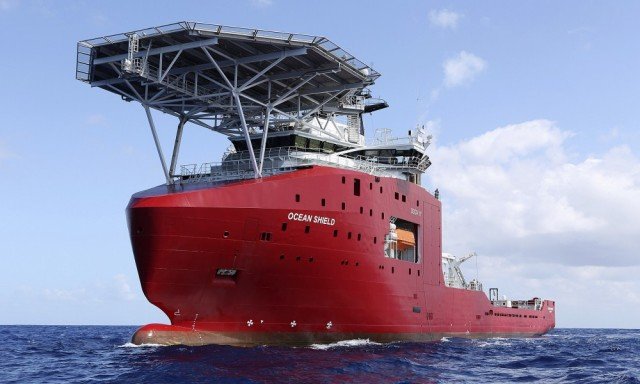
Australian vessel Ocean Shield searching for the missing Malaysia Airlines plane has reacquired signals that could be consistent with “black box” flight recorders
“But we need to visually identify aircraft wreckage before we can confirm with certainty that this is the final resting place of MH370.”
The Ocean Shield has been towing a US Navy pinger locator to listen for signals from the plane’s flight recorders in waters west of the Australian city of Perth.
It twice acquired signals over the weekend.
On Tuesday, it located the signals again, the first time for five minutes and 32 seconds, and the second time for around seven minutes, said ACM Angus Houston.
“Ocean Shield has now detected four transmissions in the same broad area,” he said.
“Yesterday’s signals will assist in better defining a reduced and much more manageable search area on the ocean floor.”
The signals have been heard in sea with a depth of 15,000 feet.
ACM Angus Houston said it was important to refine the search area as much as possible before sending down the Bluefin 21 underwater drone to search for wreckage.
“Now hopefully with lots of transmissions we’ll have a tight, small area and hopefully in a matter of days we will be able to find something on the bottom,” he said.
Experts at the Australian Joint Acoustic Analysis Centre had also analyzed the first two signals heard over the weekend, he added.
Their analysis showed that a “stable, distinct and clear signal” was detected. Experts had therefore assessed that it was not of natural origin and was likely from specific electronic equipment.
“They believe the signals to be consistent with the specification and description of a flight data recorder,” ACM Angus Houston said.
Search teams have been racing against time to locate signals from the flight recorders before their batteries expire after about one month.
Investigators still do not know why MH370 strayed so far off course, after disappearing over the South China Sea between Malaysia and Vietnam.
[youtube MnRXtPisBpw 650]
According to experts, the Chinese ship that detected a sound in the southern Indian Ocean consistent with a black box “ping” while searching for missing Malaysia Airlines plane may have simply been listening to itself.
That possibility illustrates just how complicated the task is to locate the transmitters from the lost MH370 flight.
Australian Air Chief Marshal Angus Houston warned Tuesday – 32 days since Flight 370 vanished after takeoff from Kuala Lumpur – that other ships are being kept away from the search area to prevent any further confusion about signal noise.
“We can’t have too many ships in the area, because when you are dealing with these transmissions, you need utter silence,” he said.
“It becomes a very noisy environment if you suddenly have several ships around there or ships dropping things in the water.”

Chinese ship Haixun 01 detected a sound in the southern Indian Ocean consistent with a black box ping while searching for missing Malaysia Airlines plane
The crew of Chinese ship Haixun 01 announced Saturday they had recorded fleeting pings off Australia’s west coast, but their discovery occurred more than 350 miles from where the Australians say sustained and repeated pings were found Sunday.
Video of the Chinese ship appeared to show an extra pinger on board. That pinger would just need to get wet for it to start transmitting – noise that could then get picked up by the ship’s search crews, said Anish Patel, president of pinger maker Dukane Seacom. The company supplies black-box beacons for Malaysia Airlines.
“It takes the slightest bit of moisture for that water-activated switch to automatically fire up,” Anish Patel said.
He added that it’s “not best practice” during a search to keep another pinging device where you’re listening.
Video on China’s CCTV shows the crew of the Haixun 01 boarding a small dinghy and using a handheld hydrophone, which was lowered into the water on a pole, to listen for the pings from the missing jet’s two black boxes.
Experts have said that while it’s possible that such a device could pick up pings from the ocean, it’s highly unlikely in this case. The maker of the hydrophone technology used by the Chinese said it’s intended for shallower waters and requires the user to be much closer to the transmitter. The depth of the ocean in the search area is as much as 3 miles.
The Chinese said they recorded the fleeting pings on Friday and Saturday off Australia’s west coast. The signal’s frequency was recorded at 37.5 kHz per second – the same that would be emitted by flight recorders and a noise that does not occur naturally in the ocean.
Australia also is dragging a ping locator in the search area, and officials said signals it picked up late Saturday and early Sunday were stronger and lasted longer than the ones detected by the Chinese.
Those noises haven’t been heard since. The signals would become fainter over time as the beacons’ battery life slowly dies out. That typically takes about a month.
Teams searching for the missing Malaysia Airlines plane will wait for further contact with signals picked up over the weekend before using a submersible down to search for debris.
Australian Ocean Shield vessel has heard signals that officials said could be consistent with “black box” flight recorders.
It has not been able to reacquire them since Sunday, however.
Australian officials said it was key to re-find the signals before using a submersible in a search for wreckage.
Flight MH370 went missing on March 8 with 239 people on board. The Beijing-bound plane lost contact with air traffic controllers shortly after taking off from Kuala Lumpur.
Malaysian officials say that – based on satellite data – they believe the plane crashed into the southern Indian Ocean, west of the Australian city of Perth, thousands of miles from its intended flight path.
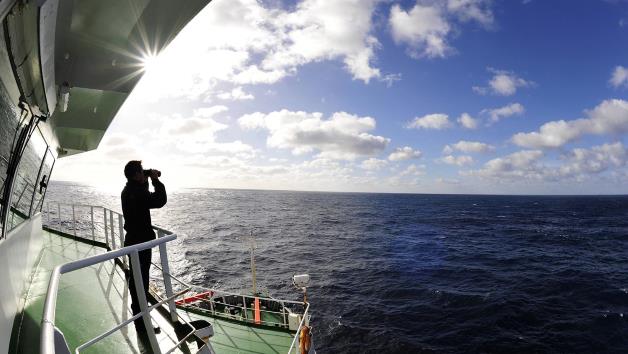
Teams searching for the missing Malaysia Airlines plane will wait for further contact with signals picked up over the weekend before using a submersible down to search for debris
In Beijing, relatives of missing passengers held a vigil to mark one month since the plane disappeared.
Speaking at Pearce Airbase in Perth, Australian Defense Minister David Johnston said that several days of “intense action” were ahead as search teams tackled “this difficult, complex task” while black box pingers were still believed to be active.
Australian vessel Ocean Shield has been using a towed pinger locator to listen for transmissions from the plane’s flight recorders. Over the weekend, it heard signals on two separate occasions, the first time for more than two hours.
On the second occasion two distinct pinger returns were audible, something said to be consistent with transmissions from both the flight data recorder and the cockpit voice recorder.
Air Chief Marshall Angus Houston, who heads the agency overseeing the search for the plane, said that Ocean Shield had had no further contact with any transmissions since then.
He said that work involving the towed pinger locator would continue for several days, adding that the Bluefin 21 underwater drone would not be deployed unless more transmissions were received.
“If we can get more transmissions we can get a better fix on the ocean floor, which will enable a much more narrowly focused visual search for wreckage,” he said.
[youtube 2elvgBNm6MA 650]
Australian defense vessel Ocean Shield searching for the missing Malaysia Airlines plane has detected signals consistent with those from black box flight recorders.
The Ocean Shield acquired the signal twice, once for more than two hours, said Air Chief Marshal Angus Houston, who is leading the search.
He called it the “most promising lead” so far.
However, ACM Angus Houston said more information was needed: “We haven’t found the aircraft yet and we need further confirmation.”
Malaysia Airlines plane, carrying 239 people, was flying from Kuala Lumpur to Beijing on March 8 when it disappeared. Malaysian officials say they believe it crashed in the southern Indian Ocean.
ACM Angus Houston said the signals were detected using the towed pinger locator deployed on the Ocean Shield.
Two separate detections occurred, he said. The first was held for two hours and 20 minutes before being lost.
The ship then turned around and on the return leg detected the signal again for 13 minutes.
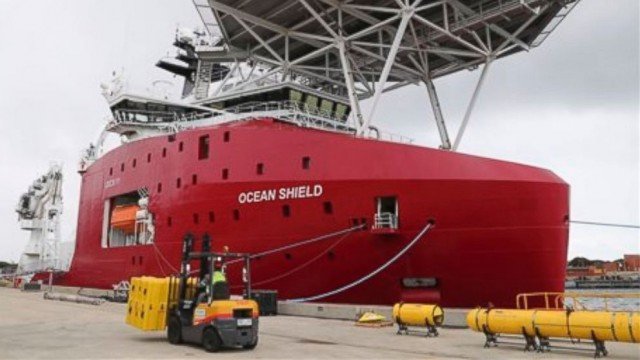
Australian defense vessel Ocean Shield searching for the missing Malaysia Airlines plane has detected signals consistent with those from black box flight recorders (photo AP)
“On this occasion two distinct pinger returns were audible. Significantly this would be consistent with transmissions from both the flight data recorder and the cockpit voice recorder,” ACM Angus Houston said
“We are now in a very well defined search area, which hopefully will eventually yield the information that we need to say that [Malaysia Airlines flight] MH370 might have entered the water just here.”
The Ocean Shield was still in the area but had not been able to reacquire the signals since, he said.
The position of the signals needed to be fixed, ACM Angus Houston said. Once that happened, the Ocean Shield could lower the Bluefin 21 underwater autonomous vehicle to try to locate wreckage on the sea floor.
The signal had been heard in sea with a depth of 4,500m, he added, which was at the limit of the capability of the Bluefin 21.
ACM Angus Houston cautioned that the next steps would take time.
“It could take some days before the information is available to establish whether these detections can be confirmed as being from MH370,” he said.
“In very deep oceanic water, nothing happens fast.”
The search operation is in a race against time as the flight recorders’ batteries are due to run out, meaning a signal would no longer be emitted.
A Chinese search vessel, Haixun 01, also said it briefly heard signals over the weekend in a different search area.
Those signals are now being investigated with the help of a British naval vessel, HMS Echo, which is equipped with sophisticated sound-locating equipment.
Reports said the crew of the Chinese ship had been using a sonar device called a hydrophone to pick up sounds.
Experts said it was technically possible but unlikely that the sounds heard with this equipment related to the missing plane.
Chris Portale, a director of the US company Dukane which makes the device that emits signals from flight recorders, said looking for the Malaysian plane’s “black boxes” was like “looking for a suitcase on the side of a mountain” but under water.
So far, not a single piece of wreckage has been found from the missing plane, but officials have concluded – based on satellite data – that it ended its flight in the sea to the west of the Australian city of Perth.
[youtube IABvkcL3Yx4 650]
Australia’s Air Chief Marshal Angus Houston coordinating the search for missing Malaysian Airlines plane say a Chinese ship has detected a pulse signal for a second time, within hours of it being heard earlier on Saturday.
ACM Angus Houston called the discovery in the southern Indian Ocean an “important and encouraging lead”.
He warned that the data were still unverified.
British naval ship HMS Echo is sailing to the area to investigate further.
It is expected to arrive in the early hours of Monday.
Australian aircraft were also on their way, ACM Angus Houston told reporters. Australian naval vessel Ocean Shield would be heading to the latest search area once it had investigated a third acoustic detection elsewhere.
Both HMS Echo and ADV Ocean Shield have technology able to detect underwater signals emitted by data recorders.

A second pulse signal was detected less than 1.2 miles from the original
Malaysia Airlines flight MH370 disappeared on March 8 with 239 people on board. Investigators believe it crashed in the Indian Ocean although no confirmed debris has been found. The battery-powered signal from the “black box” recorders fades after 30 days.
After confirming details of the first pulse detected on Saturday which had “characteristics consistent with” an aircraft’s flight recorder, Angus Houston told a news briefing at Pearce Air Base near Perth of a second signal.
“[Saturday] afternoon Perth time, there was another acoustic detection less than 2 km [1.2 miles] from the original.”
The second signal lasted about 90 seconds, he said.
The search coordinator insisted the latest developments should be treated as unverified “until such time as we can provide an unequivocal determination”.
“We are working in a very big ocean and within a very large search area, and so far since the aircraft went missing we have had very few leads which allow us to narrow the search area,” he said.
“I assure you that we will follow up and exhaust every credible lead that we receive.”
A dozen military aircraft and 13 ships are already searching three areas about 1,240 miles north-west of the Australian city of Perth.
Australian PM Tony Abbott earlier said he was “hopeful but by no means certain” that the signal detected on Saturday was linked to missing flight MH370.
Haixun 01 picked up the first so-called “ping” signal at about 25 degrees south latitude and 101 degrees east longitude, state-run Xinhua news agency said.
The signal reportedly had a frequency of 37.5 kHz – the same as that emitted by the flight recorders.
Three people on board the boat were said to have heard the pings, which were not recorded as they came suddenly.
Xinhua also reported that a Chinese military plane had spotted a number of white floating objects about 60 miles away a few hours earlier.
[youtube 3EOQPNuCUjE 650]
[youtube 4PU0m0f8r2w 650]








